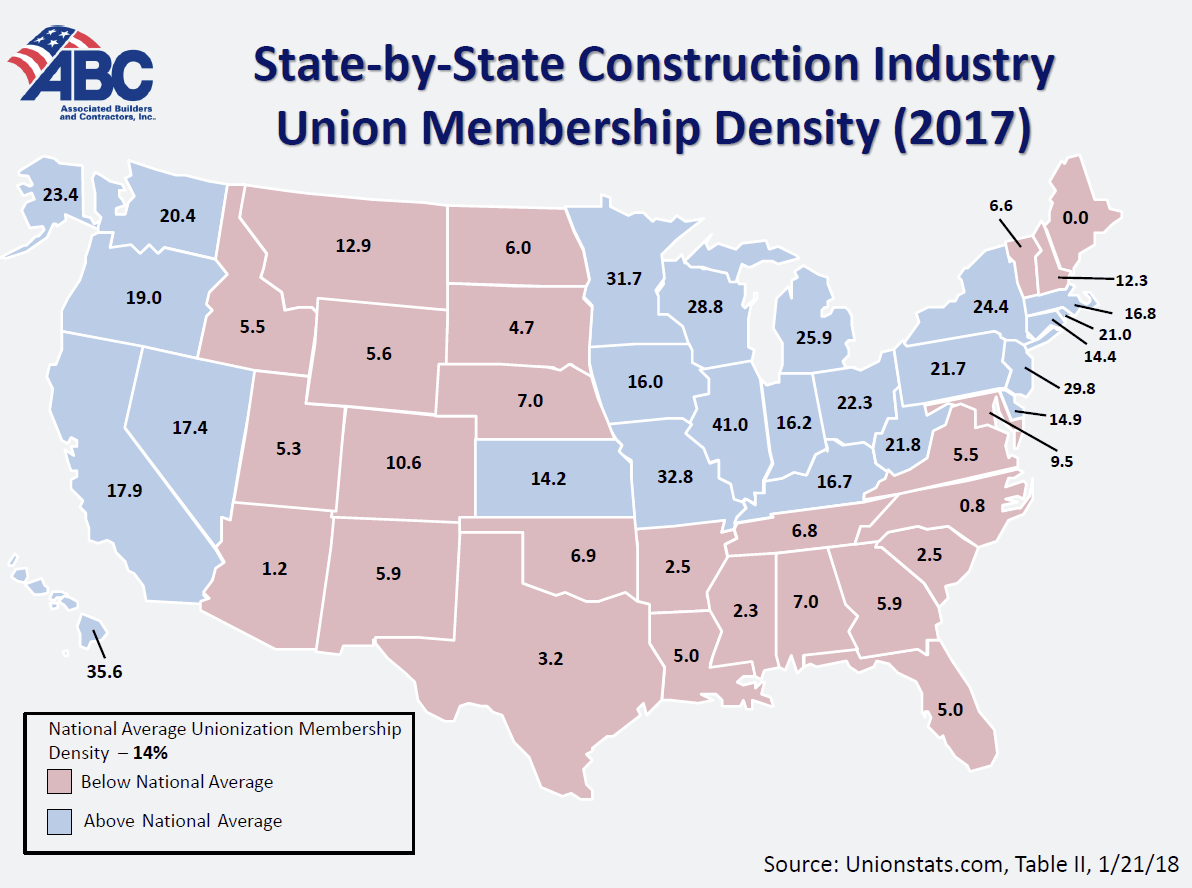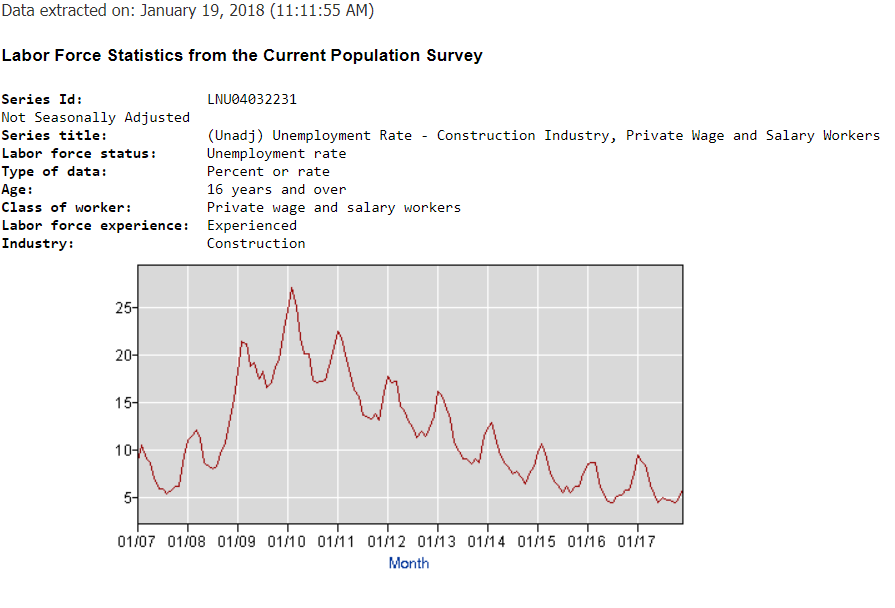BLS: Just 14 Percent of U.S. Construction Industry Is Unionized
According to data from the Bureau of Labor Statistics (BLS) annual Union Members Summary report published January 19, 2018, 14 percent of wage and salary workers were members of unions in the U.S. private construction industry. That’s a slight increase from 13.9 percent in 2016.
The overall private construction industry increased by 356,000 jobs (7,488,000 in 2016 vs 7,844,000 in 2017). Of that increase, 63,000 workers joined construction unions, which means 293,000 workers (82 percent) of them did not.
Just 1.102 million out of 7.844 million (14 percent) U.S. construction industry workers belonged to a union in 2017, according to BLS.
Union membership in the U.S. private construction industry has steadily declined. In 1947, approximatly 87 percent of its workforce was unionized. During the nadir of the construction industry’s recession in 2010, just 801,000 construction industry workers (13.1 percent) belonged to a union, the smallest number of union members in recent history.
Updated state-specific union membership information for various U.S. industries, including the construction industry, is available at www.unionstats.com.

Improving Economy Results in Growth for Union and Nonunion Sectors of Construction Industry
The most recent BLS data puts the construction industry unemployment rate at 5.9 percent, which is a sharp decline from the 7.5 percent unemployment rate in a year-over-year comparison (and certainly better than the decade-high unemployment rate of 27.1 percent in February 2010).

Construction unemployment rates improved in 36 states in a year over year comparison, according to a January 2018 report issued by Associated Builders and Contractors (ABC), which releases monthly state-by-state construction economics data here.
The strength and health of the construction industry’s unions can impact the public policy debate surrounding anti-competitive and costly government-mandated project labor agreements (PLAs).
PLAs typically ensure construction contracts are awarded only to companies that agree to recognize unions as the representatives of their employees on that job; use the union hiring hall to obtain workers at the expense of existing qualified employees; obtain apprentices exclusively through union apprenticeship programs; follow inefficient union work rules; pay into union benefit and multi-employer pension plans workers will never benefit from, unless they meet vesting requirements; and force workers to pay union dues and/or join a union as a condition of employment.
Discriminating against qualified merit shop contractors and their skilled nonunion construction workforce via PLA mandates costs taxpayers a fortune. When mandated by a government agency on taxpayer-funded projects, PLAs drive up the cost of construction projects anywhere from 12 percent and 18 percent, on average, according to a series of academic studies. A study published in May 2017, found Ohio school projects subject to government-mandated PLAs were 13 percent more expensive compared to school projects not built with PLA mandates.
In 2018, ABC will continue to fight for federal, state and local policies that create a level playing field in the procurement of government construction contracts, increase competition, help small businesses grow, curb construction costs and create jobs and opportunities for all Americans and all qualified construction industry businesses.











